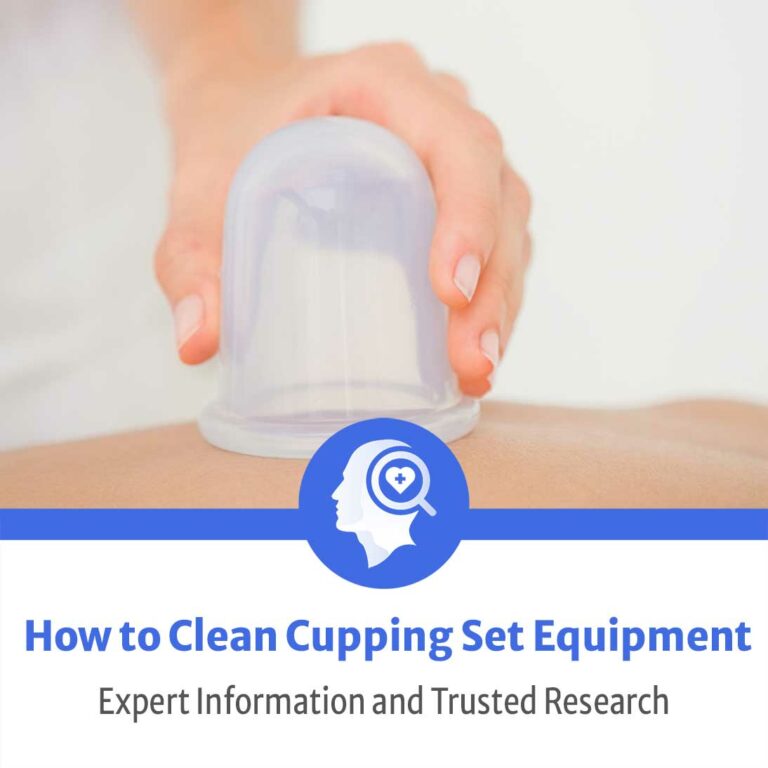How to Clean Cupping Set Equipment: Professional Disinfection
-
Luz Chacon
- 2023-12-12
According to our expert team’s in-depth research (Best et al., 2014), HPD (hydrogen peroxide decontamination) is the most effective measure to remove long-term environmental contamination.
We have completed research of our own in order to give you the most direct and effective way to clean your cupping set.
This article will teach you with:
- A step-by-step guide on how to clean cupping set equipment
- Information on how to clean silicone cups
- Answering frequently asked questions about cleaning and disinfecting
We have another article for the ultimate best silicone cupping set equipment you can buy this month!

Table of Contents
How to Clean Silicone Cups
- Remove the cupping supplies from the patient. If you have vacuum cups, you must completely disassemble each cup for the most effective cleaning.
- Wash the cups with soap and water: Scrub the cups with a scouring tool to ensure visible cleanliness and all organic material has been 100% removed.
- Rinse the soiled matter off the cups. Distilled water is required for a final rinse to avoid water spots.
- Apply rubber gloves prior to using any disinfectant on your cupping device.
- Cupping sterilization is achieved by immersing the cups in a 7.5% hydrogen peroxide ready-to-use disinfectant/sterilizer for 6 hours (READ PRECAUTIONS: sterilization brands may vary on the cup’s time-period soaked).
- However, 30 minutes soaking in the 7.5% hydrogen peroxide is the time-period required to reach “high-level disinfection” if you need to reuse the cups quickly.
- After sterilization, rinse the cups once more. The disinfectant agent needs to be removed or neutralized.
- Dry the cupping tools on an air-drying place or rack.
- After the drying process is completed, you can now use your newly cleaned cups on your next patient.
“Cupping therapy, as cups are medical devices, needs to adhere to the U.S. or Canadian regulatory standards of the local health department.”
Silicone Massage Cups
Cleaning silicone massage cups can seem overwhelming. We have made this article for you so that you can find out the solution to your question. It is important to wash silicone massage cups properly. While you are working on therapy for other patients, you need to have the silicone massage cups completely disinfected in between uses.
Fire cupping sets can be cleaned in the same manner as above. Glass or silicone, the cleaning and sanitizing process are the same. It is always advised to ensure that you have more than one or two cupping sets available so that you can follow the best practices above. The safety of your patients comes first, which is why you need to learn how to clean silicone cupping set equipment.
Learning how to clean plastic cupping set equipment is vital to the health of your patients. Massage therapists that practice cupping is practitioners of health care. As a professional, you need to adhere to the standard of cleanliness that the rest of the medical world practices.
Can You Disinfect Silicone?
Yes. If you have followed the cupping instructions correctly, the silicone cups should be ready for disinfection. After the cleaning process stated above; please immerse the massage cups in a 7.5% hydrogen peroxide professional sterilization bath. 30 minutes is the label for high-level disinfection of a medical product, including silicone products.
We hope this answered your question of how to clean suction cups, whether they are a different type of plastic that you are used to caring for, or a different material altogether.
We have ordered the steps of how to clean cupping set equipment in the article above. Quickly: washing and rinsing the cups to start, then disinfecting the therapy cups for 30 minutes before rinsing the solution off and drying them.
Conclusion

In total, we write this article for the health community because we know people want the answer to this question. Cupping cleanliness is an important part of our job here at findithealth.com due to the fact that we want our health community to be able to teach other people, spreading the knowledge that we have researched for this publication.
That’s why we do our due diligence in creating a research space for the health-curious person. We do in-depth research on health topics that interest us so that we can find solutions for our community.
If you liked this article, you will enjoy another write-up about the best pulse oximeter for overnight monitoring. We like to feel out what is relevant to our readers so that we make the most informative findings-driven content we can.
References
E.L. Best, P. Parnell, G. Thirkell, P. Verity, M. Copland, P. Else, M. Denton, R.P. Hobson, M.H. Wilcox. (2014). Effectiveness of deep cleaning followed by hydrogen peroxide decontamination during high Clostridium difficile infection incidence, Journal of Hospital Infection, Volume 87, Issue 1, 2014, Pages 25-33, ISSN 0195-6701, https://doi.org/10.1016/j.jhin.2014.02.005.
